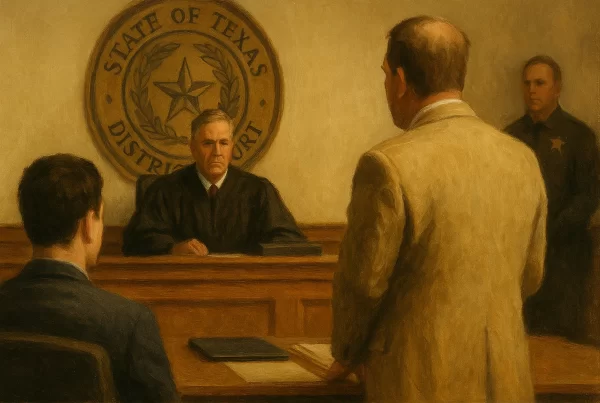The writ of habeas corpus has long been regarded as one of the most fundamental protections of individual liberty in the Anglo-American legal tradition. Literally meaning “you shall have the body,” the phrase comes from medieval Latin court orders and reflects the basic idea that a person held in custody must be physically brought before a judge so that the legality of the detention can be examined.
Unlike many procedural rights that developed more recently, habeas corpus traces its lineage to English common law, where it gradually emerged as a safeguard against arbitrary imprisonment by the Crown. By the seventeenth century the English courts had developed the writ into a formidable check on executive authority, and Parliament’s Habeas Corpus Act of 1679 codified its place as a basic safeguard. From this heritage, the principle carried into American constitutional thought and became a cornerstone of due process.
The framers of the United States Constitution did not create the writ anew, but they enshrined its protection in Article I, Section 9, declaring that “the privilege of the writ of habeas corpus shall not be suspended, unless when in cases of rebellion or invasion the public safety may require it.” This language assumed that the writ already existed as a right recognized by the law, but emphasized that it could not be denied except in the most extraordinary circumstances. It was one of the very few liberties guaranteed in the text of the Constitution before the adoption of the Bill of Rights, reflecting the high degree of importance attached to it.
The suspension power was invoked only sparingly in American history, most famously by President Abraham Lincoln during the Civil War. His decision to permit military authorities to detain suspected Confederate sympathizers without immediate court review provoked intense debate, and its controversial use underscored the enduring tension between public safety in emergencies and the preservation of individual freedom.
Texas law offers an especially strong affirmation of habeas corpus as a matter of right. Article I, Section 12 of the Texas Constitution of 1876 provides that “the writ of habeas corpus is a writ of right, and shall never be suspended.” This language, which has endured through numerous constitutional amendments and legal reforms, emphasizes that the protection is not merely a procedural privilege but a guaranteed entitlement of anyone held in custody. The phrase “writ of right” is significant, placing habeas corpus in the same category as trial by jury or the right to counsel: indispensable elements of due process, not subject to executive whim or legislative retrenchment. Texas courts have consistently applied this provision, recognizing habeas petitions as a vital avenue for defendants challenging their confinement.
In practice, the writ has served two complementary roles in Texas criminal procedure. The first is preventative, ensuring that a person arrested or detained without proper charge can be released quickly by court order. This use of habeas corpus continues the original English function of guarding against arbitrary jailing, where a sheriff or officer could not hold someone indefinitely without producing lawful cause.
The second is corrective, offering a post-conviction remedy for individuals who claim that their trial or sentence violated constitutional standards. Although appeals and other review procedures exist, habeas petitions remain the primary way in which prisoners in Texas raise issues of ineffective counsel, newly discovered evidence, or violations of fundamental rights that were not fully resolved at trial. The Court of Criminal Appeals, as the state’s highest criminal tribunal, has long been the principal forum for such petitions, and its docket reflects the constant presence of habeas cases.
The importance of habeas corpus is magnified in capital cases, where the stakes of wrongful conviction are ultimate. Texas, with its long history of capital punishment, has seen the writ used in numerous death penalty appeals. Petitioners often assert that errors in jury selection, inadequate defense representation, or violations of constitutional rights require a new trial or commutation. While not all petitions succeed, the very availability of the writ underscores its role as a safeguard against irreversible miscarriages of justice. In some instances, federal habeas review has intervened after state courts rejected petitions, further illustrating how the right functions as a multilayered check across both state and national systems.
Because of its wide reach, habeas corpus also symbolizes the principle that no government in Texas or the United States may detain a person beyond the limits of law. The writ does not guarantee release in every case, nor does it shield defendants from legitimate prosecution. Instead, it ensures that detention is justified by lawful authority, tested in a court of record, and not left to the unchecked discretion of police or executive officers. This balance is what makes habeas corpus a defining feature of constitutional liberty: it affirms that freedom from unlawful restraint is the default condition, and that the government must always justify the deprivation of liberty.
The right of habeas corpus has endured across centuries precisely because it speaks to the most elemental concern in criminal justice: whether the state may deprive a person of freedom without accountability. In Texas, where constitutional law explicitly elevates the writ to the status of a guaranteed right, its continuing presence in criminal courts reflects a broader commitment to due process. The routine filing of petitions, the careful consideration given by judges, and the persistent invocation of the writ in both ordinary and extraordinary cases all testify to its central place in the legal order.



